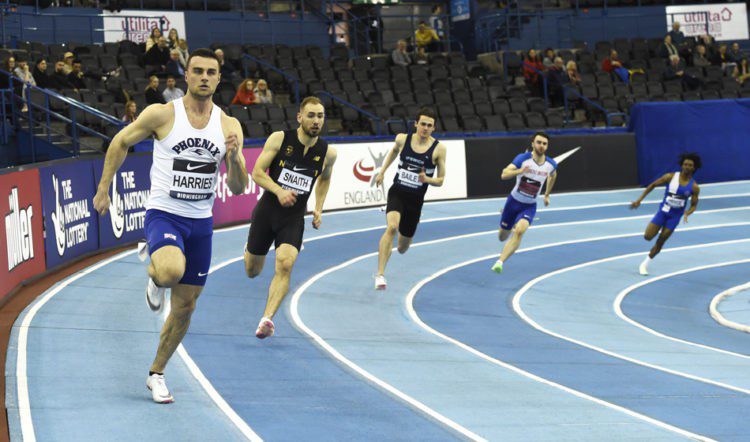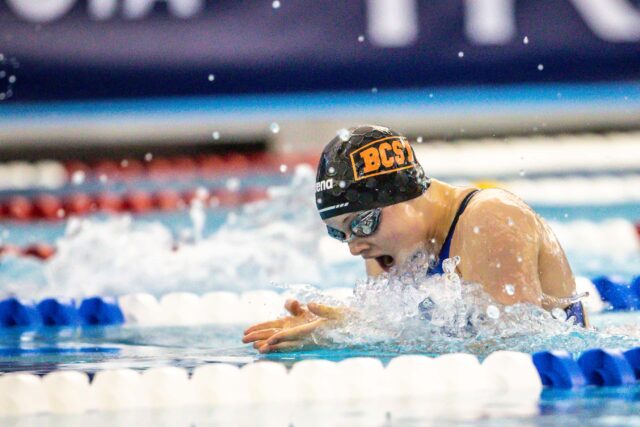
Coach John Shepherd looks at how to prepare to compete indoors if you don’t have easy access to indoor facilities
For sprinters and middle-distance runners alike, the banking on indoor tracks can prove quite a scare to those who have never raced on one. Runners in the outside lanes will be starting at a high level and those in the inside lanes will have a very tight bend to run into and out of. In the events which feature a break point it will be very difficult to pass other athletes so getting to the front and trying to control the race is therefore vital.
According to the stats I could find from World Athletics, the recommended angle for a banked six-lane 200m track is 10 degrees, while the lanes must be a minimum of 0.90m +/-0.01m wide – which compares with the 1.22m (+/-0.01m) of an outdoor track.
The angle of descent from bend to straight from the outermost lane must not exceed five per cent but anyone who has run 200m or 400m in lane six on an indoor oval will know that five per cent is a lot! It’s an angle greater than that recommended for over-speed work when sprinting downgrade.
On an indoor track, sprinters can have greater cadence and almost feel out of control as they leave the blocks, come off the bend and head downgrade. Then, before they know it, they hit the ramp into the second bend, rise to the crown if in the outer lanes and then drop down to the finish line. It’s not unknown for sprinters to stumble as they enter the very short finishing straight as fatigue kicks in and they descend while fighting for position and also trying to hold technique.
What can you do to prepare?
Sprinting down a similar gradient will give the athlete at least a feeling of what it’s like to come off the bend. You may even be able to create a bend of sorts using cones/markers to run into and potentially out of. You’d want to run about 40m-50m straight first.
If you were to combine the uphill and downhill reps with a turnaround between them you would introduce some more fatigue which would get closer to actual race experience. You could even construct a specific session for the 200m or 400m sprinter.
Now of course this does not allow for the banked nature of a proper indoor track so it will be harder to make any curves on the ascent or decent and it may be best to just run straight. However, this form of training will also prove to be useful in its own right as a method for sprint athletes in any case.

Toby Harries wins the 200m (Mark Shearman)
In the 200m and 400m sprints the descent, particularly from the first bend, can be seen as “free-energy”. If the sprinter tries to run too fast they will probably not time their stride – it’s about being able to capture the speed the gradient offers and not to fight it.
Another idea is to make a tighter bend on a normal 400m track – using cones. You’d arrange your cones in the middle to outer lanes to run a curve into the tighter bend and a quadrant plus of improvised running out of the tighter bend into the straight. Reps can then be performed. Again, no provision is made for banking but at least the feel of a tighter bend will offer some transference.
Middle-distance runners may need to experience running very close to each other (closer than on an outdoor track – nobody will really want to run in lanes 3-4 and beyond) and really accelerating fast to overtake or, more than likely, hold position. A session of bunching and accelerating could be an option – a sort of special fartlek.
There are some ways to prepare for indoor track racing without actually using an indoor track. One positive, once you have run a couple of times on an indoor track – rather like riding a bike – you’ll quickly pick it up when you race again and will know what to expect.
» This article first appeared in the January issue of AW magazine, which you can read here
How to get ready to race indoors appeared first on AW.


















You must be logged in to post a comment Login